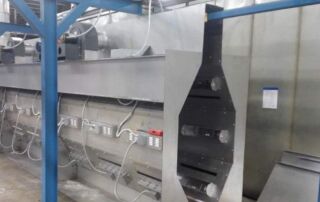Best Construction Materials For Industrial Ovens
Production Systems works with manufacturers and finishing companies to design industrial ovens that meet the specific requirements of the groups. The engineering and design team at Production Systems incorporate the proper air circulation, ventilation exhaust, air seal, combustion equipment, safety controls, temperature controls, and electrical controls that are necessary for a successful process. One of the primary factors in designing an industrial oven is the selection of the right materials. Initial considerations include the interior and exterior metals. When choosing materials for an industrial oven, temperature and corrosion are key considerations. Material Options for Industrial Oven Walls Industrial oven walls must be durable, resistant to high temperatures and corrosion, and provide effective insulation to maintain consistent temperature and energy efficiency. They also need to be designed to prevent warping and heat loss. Heavy gauge cold rolled steel is often used for structural components, including industrial equipment. Due to the cold rolling process, this steel exhibits these properties: improved hardness, resistance to deformation, and greater tensile strength. It also produces smooth, high-quality surface finish, that makes it aesthetic pleasing. Another material, [...]










